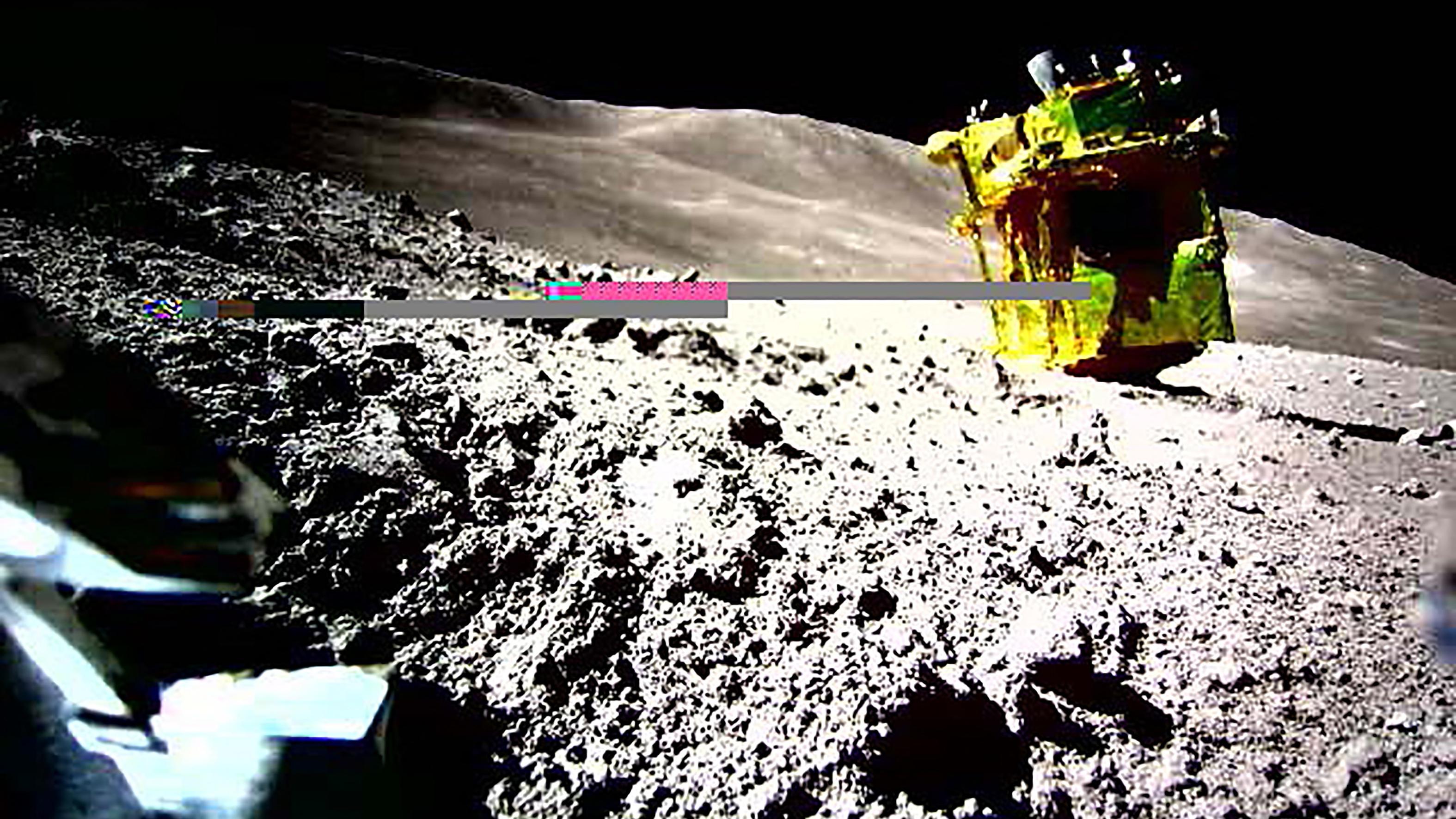 This handout photo released on Jan 25, 2024 from the Japan Aerospace Exploration Agency (JAXA) and credited to JAXA, Takara Tomy, Sony Group Corporation and Doshisha University shows an image of the lunar surface taken and transmitted by LEV-2 "SORA-Q" the transformable lunar surface robot "SORA-Q" (operation verification model), installed on the private company's lunar module for the Smart Lander for Investigating Moon (SLIM) mission, after landing on the Moon on Jan 20. (PHOTO / AFP)
This handout photo released on Jan 25, 2024 from the Japan Aerospace Exploration Agency (JAXA) and credited to JAXA, Takara Tomy, Sony Group Corporation and Doshisha University shows an image of the lunar surface taken and transmitted by LEV-2 "SORA-Q" the transformable lunar surface robot "SORA-Q" (operation verification model), installed on the private company's lunar module for the Smart Lander for Investigating Moon (SLIM) mission, after landing on the Moon on Jan 20. (PHOTO / AFP)
TOKYO — Japan achieved an unconventionally precise moon landing within a few meters of its target, the space agency said on Thursday, after the nation became the fifth to put a spacecraft on the moon with the weekend touchdown of its SLIM probe.
Japan hopes the demonstration of the precise landing technology will revitalize a space program hit by recent setbacks.
Angled westward because of the tumble, SLIM's solar panels have been unable to generate electricity, but a change in the direction of sunlight could power it up again
The Japan Aerospace Exploration Agency (JAXA) said it received all data about the landing of its Smart Lander for Investigating Moon (SLIM) within the 2 hours and 37 minutes after the touchdown, before the lander lost power.
READ MORE: Japan counts down to precision 'moon sniper' landing mission
"We need a more detailed analysis of the data, but the accuracy of the 'pinpoint' landing was probably 3 m to 4 m," its project manager for the lander, Shinichiro Sakai, told a press conference, or a distance equivalent to 10 to 12 feet.
The lander was toppled on the gentle slope of a lunar crater in a picture, opens new tab of the moon's surface published by JAXA, which had been taken by a baseball-sized wheeled rover, LEV-2, that SLIM deployed during touchdown.
One of the lander's two main engines probably stopped in the final phase of touchdown, leaving it in an unintended position, Sakai added.
Angled westward because of the tumble, SLIM's solar panels have been unable to generate electricity, but a change in the direction of sunlight could power it up again, JAXA said in a statement.
Dubbed the "moon sniper", SLIM attempted to land within 100 m (328 feet) of its target, bettering the conventional accuracy figure of several kilometres.
It employed "vision-based" navigation that JAXA says could be a powerful tool for future exploration of hilly moon poles seen as a possible source of fuel and life-giving water and oxygen.
Home to several private-sector space startups, Japan aims to send an astronaut the moon in the next few years, but JAXA's recent setbacks in rocket development have included the launch failure in March of its new flagship rocket H3.
That delayed space missions, including SLIM and LUPEX, a joint lunar exploration project with India, which made a historic touchdown on the moon's south pole with its Chandrayaan-3 probe in August.
READ MORE: Japan's lunar probe not generating power despite moon landing
In the past year, three lunar missions by Japanese startup ispace, Russia's space agency and American company Astrobotic have failed, but more lunar landers will head to the moon this year.
US startup Intuitive Machines, opens new tab aims to launch its IM-1 lander in mid-February.
China plans to send its Chang'e-6 spacecraft to the far side of the moon in the first half of the year, and NASA's launch of its lunar polar exploration rover VIPER is set for November.


